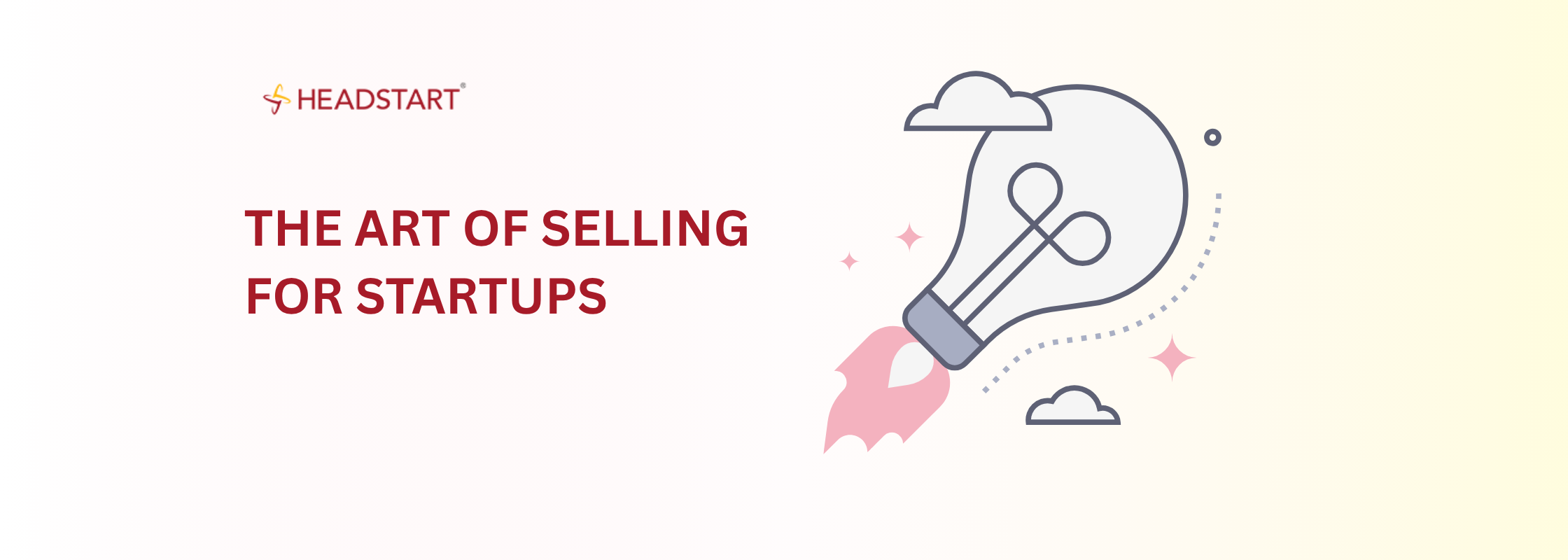
The Art of Selling for Startups
Headstart Network Foundation
June 5, 2018 6:16 AM
After building a product, the biggest challenge a startup face is finding the first few customers who are willing to try their product when no one has even heard of them. To overcome this challenge, a startup needs to be focused, have perseverance and sometimes, have a bit of luck.

Entrepreneurs need to invest sufficient amount of time and effort in building a sales engine to stay out of the cemetery. However, selling isn’t just about selling anymore. There is just as much art and science to sales as there is to design an optimal user interface.
So, to uncover the art of selling, we invited Arun Saxena, Seasoned Product Manager, Startup Mentor and Investor. Mr Saxena is presently chief mentor at Insights and Directions, a mentoring and consulting firm based in Hyderabad. His charter is to help technology companies build products that win globally. His areas of interests are – strategy and innovation. He frequently engages with startups on Nasscom and Stanford Technology Ventures platforms. Besides, Arun consults with mid and large size technology companies.
Below are some of the challenges that startups face:
Importance of segmentation
Brand positioning
Creating a pricing model
Building a value proposition

Mr Saxena began his session by stating how a startup should look at sales. He emphasised on building a sales funnel by segmenting the target group. According to him, sales is the last stage of a startup. There are many other stages before that which are important. Unless a startup has a very unique product, they should have multiple segmentations of a large market. According to Mr Saxena, “You don’t sell one product to everyone. Everyone has different needs, buying capacity.”
He gave a classic example of CCD and how they have segmented their markets into three user categories. They have cafes, lounge, square et al to cater to various user segments. Pricing and offerings across the formats vary as per the positioning.
Next up was value proposition. He mentioned the different types of value propositions that a startup should remember while identifying their own value proposition. Eg. Emotional value, functional value, economic value et al. He also mentioned how different decision makers may look for different values in the same product. Eg. an engineer may look for functional value in a product, whereas a purchase manager may look for economic value in the same product.
Mr Saxena proposed the book, ‘Made to Stick: Why Some Ideas Survive and Others Die’ by Chip Heath and Dan Heath while talking about the importance of communication in selling. A simple formula while preparing marketing & sales communication suggested by him is SUCCESS. It breaks down as, S=Simple, U=Unexpected, C=Concrete, C=Credible, E=Emotional & S=Stories.
“Positioning helps you stand out in the crowd”, said Mr Saxena. He also said that positioning must be done in such a way so that your customers can remember you. He gave examples of Axe and how it positioned itself in the market.
Last but not the least, he spoke about how to price a product right. The example of ‘Pricing Thermometer’ helped the audience get an understanding of how they should price their products correctly.
The pricing thermometer:
Source: Professor Andres Terech, UCLA Anderson School of Management
The rest of the session was followed by a Q&A from the audience and networking between the attendees.
Written by Rajat Sinha
Headstart Mumbai
